|
|
|
|
 |
|
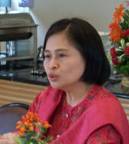 |
“Weak South-south knowledge sharing links for CBDRR is one of the key reasons behind establishing the TLC. Trainers and mentors are always expected to bring new contents, creative methodologies and different types of training techniques, but there isn’t any pace or platform where they themselves can share, learn, and absorb these from each other,” Ms. Zenaid Delica-Willison, Advisor, UNDP’s Special Unit for South-South Cooperation, Bangkok |
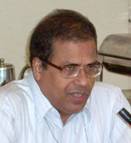 |
“The 2005 Disaster Management Act of India emphasizes capacity development for DRR. Preparedness is most effectively achieved through training and capacity development. The NIDM has one of the largest collections training resources in the country, with 77 training modules and 29 centers catering to about 28,000 key individuals every year,” P.G. Dhar Chakrabarti, Executive Director, NIDM |
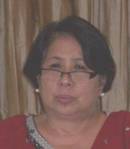 |
“For me TLC is about Tender Loving and Care for trainers and educators. The idea of connecting trainers and academic community from India to other South Asian countries and with South-East Asia is so exciting. Indian experience in CBDRR and promoting higher education for DRR has great relevance to South and South-East Asia.” Lorna Victoria, Vice President, Center for Disaster Preparedness (CDP), the Philippines |
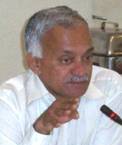 |
“We lack professionals in the field of DRR. One of the greatest challenges that UNDP faced in the past was to reach out and train government functionaries in absence of specialised institutions such as National Institute for Disaster Management (NIDM). ATIs and state level disaster management cells have traditionally played an important role in promoting DRR in India and holds a key for preparing India against disaster risks,” Mr. G. Padmanabhan, Emergency Analyst, United Nations Development Programme (UNDP) |
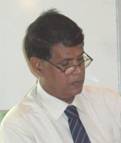 |
“Pondicherry University is one of first universities to pick up DRR education, by designing and launching a Disaster Management Unit within the University. India can take a lead in institutionalising DRR in university education with many similar examples across the country,” Dr. N. Ramanujam, Professor, Pondicherry University |
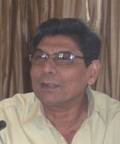 |
“TLC should focus on integrating DRR into development activities. Good practice examples such as use of National Rural Employment Guarantee Scheme (NREGS) for mitigating impacts of floods could be captured and shared for use in training and teaching. We must also think of creative ways of engaging research institutions and media representatives. S. K. Singh, Professor and Head, Center for Disaster Management & Rural Reconstruction, National Institute for Rural Development |
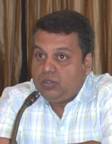 |
“Beyond developing and sharing training and education resources, TLC should also develop a strategy to inform and influence relevant national policies, plans, and authorities. Mr. P. B. Sajeev, Programme Coordinator (Tsunami Extension Programme), Action Aid |
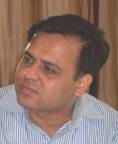 |
“TLC stakeholders should collaborate in sharing DRR training and education resources. May be TLC should not engage in conducting trainings, but rather act as a pool of training and education resources,” Mr. Vikrant Mahajan, Sphere India Coordinator, Sphere in India |
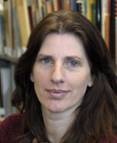 |
“While developing course for DRR, it is imperative to seek how the rise in disasters today intertwines with climate change. Climate change, as we know now, is manifested in a rise in frequency and intensity of disasters. It is important therefore to explore the commonalities and synergies in education concerning adaptation to climate change and education on disaster risk reduction,” Dorothea Hilhorst, Professor of Humanitarian Aid and Reconstruction, Wageningen University, the Netherlands |
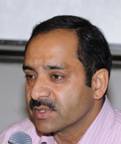 |
“The time has now come to take proactive action in unison and include DRR in the course curricula of higher education. Every effort needs to be made to ensure that, DRR programmes are offered in a maximum number of universities and educational institutions in India. This will not only progressively enhance acceptability of DRR as an academic and professional domain but also boost knowledge management in India,” Col Alok Raj, Faculty of Decision Sciences, College of Defence Management, Secunderabad, India |
 |
“AIDMI’s primary concern is about the distance between young students and risk faced by the poor and vulnerable at community levels. We must help these students come closer to disaster victims. Also, outsiders write most of the literature available on disaster risk for educational purposes in India. There is very less material about DRR in India by Indians. We must think of innovative ways engaging more and more Indians DRR practitioners and academics to develop context specific DRR materials for India,” Mihir R. Bhatt, Honorary Director, AIDMI |
 |
“It would help us think through the future of higher education for DRR in India if we ask ourselves two questions; who should benefit from these initiatives immediately and who in the long-run? What skills do we need to impart to meet challenges of disaster response and risk reduction in the future? We have seen thousands of aid workers and DRR practitioners working in the 1999 Orissa super cyclone, 2001 Gujarat earthquake, 2004 Indian Ocean tsunami, 2005 Kashmir earthquake, and now in 2007-2008 Bihar Floods. We must remember that a majority of these aid workers have not benefited from any sort of formal DRR education. “Should not they?” Mr. Sanny Ramos Jegillos, Regional Programme Coordinator, UNDP, Bangkok |
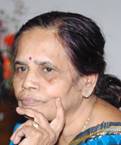 |
“The major thrust of any distance learning programme is on the institutional setup. Without adequate and efficient institutional setup it becomes almost impossible to run any distance-learning programme. The major drawback of any distance-learning programme is that the students hardly receive any practical input and exposure. Distance learning programmes in higher education in disaster management must find ways of overcoming this challenge and engage students in real disaster situations” Ms. Aaradhana Salpekar, Professor and Head of Sikkim Manipal University, New Delhi Center and Director, Indian Institute of Ecology and Environment (IIEE), New Delhi. |
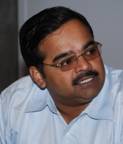 |
“The Jamsetji Tata Center for Disaster Management (JTCDM) launched its MSc/MA in Disaster Management Programme in September 2007 without any support from the University Grants Commission (UGC) of India. Similarly, many higher education courses in disaster management are self-financed and thus their sustainability is a serious concern as the fee structure is not affordable to many interested students. We must pursue UGC recognize disaster management as one of the key disciplines and help it develop a model course curriculum as a guidelines for Indian Universities,” Mr. Mahesh Kamble, Ass. Professor, JTCDM, Mumbai. |
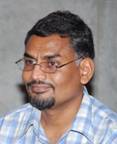 |
“Based on my principle research interest in floods, droughts, and annual damage to Indian economy, I suggest that higher education in disaster management initiatives in India (along with other high impact disasters such as earthquake and cyclones) should focus more on researching and developing risk reduction methods for ongoing floods and droughts in India. The higher education sector needs to undertake a detailed needs assessment to understand current trends in disaster manamgent and market forces to help students find appropriate jobs,” Mr. Anupam k. Singh, Department of Civil Engineering, Nirma University of Science and Technology |
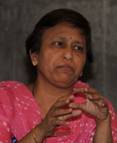 |
“The Saurashtra University is planning to set up a higher education course on disaster management. The university has prepared a draft course curriculum to set up a course on Disaster Management and Disaster Planning as one of the regular offerings at the university. The course is likely to be managed by the Department of Socieology incorporating key principles and approaches of the social sciences. The university has already introduced a paper on Sociology of Disaster and Disaster Planning,” Professor, Hemixa Rao, Department of Sociology, Saurashtra University, Rajkot |
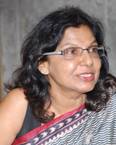 |
“The demand for courses on disaster counseling is growing in numbers. Following the recent terror attach in Mumbai, we received large number of applications for the certificate course on disaster Counseling, people suddenly felt that they need such skills to help their relatives, neighbors, and friends. Even, one of the largest telecommunications provider in India demanded training for its staff in disaster counseling. Universities with higher education disaster management programmes are often well-placed to respond quickly and meeting the urgent demands from both victims and state authorities, including civil society organizations and businesses.” Dr. Gita Kewalramani, Coordinator, University of Mumbai’s Times Center for Disaster Management, Mumbai. |
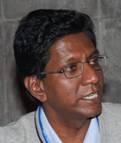 |
“The Science and Communication initiative of the Anna University on the Media and Disaster Management is aimed at understanding and strengthening the crucial role of media in various phases of disaster management. It is not easy to train media to understand the fundamentals of disaster management. Most media professionals are trained on how to write, interview and face the cameras, but very few are trained to analyze disaster situation in a scientific way. A lot of work is needed to persuade media professionals to acquire basic knowledge of disaster issues on the ground,” Dr. Arul Alam, Assistant Professor, Department of Media Sciences, Anna University, Chennai |
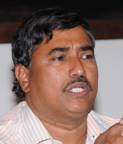 |
“Every year thousands of students from India is enrolled in our disaster related courses making the IGNOU the most preferred destination for higher education in disaster management in India. Unlike other universities, intake capacity of the IGNOU is not limited. IGNOU is the largest education material producer and supplier in India. Openness and flexibility vis-à-vis eligibility criteria might help promoting and popularizing higher education programmes in disaster management in India. Dr. Raj Gopal, Regional Director, IGNOU Regional Center, Ahmedabad |
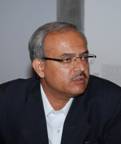 |
“In India we have a very limited number of universities offering higher education in disaster management. Availability of limited options at the disposal of students often result into a very low bargaining power. More choices are needed to empower students to ensure continuous quality improvement in the field of higher education in disaster management in India. A policy framework is needed to evolve, govern, and regulate these programmes,” Dr. Vedant Pandya, PhD. Associate Professor, Bhavnagar University. |
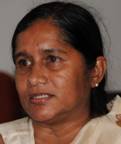 |
“Based on the field experience and learning from several higher education initiatives for disaster management in India it appears that the demand from the humanitarian sector does not match the supply of professionals from Indian universities. One way of addressing this mismatch could be more focused efforts on placing students in disaster management agencies and in real disaster situations. Many of the disaster management higher education curricula do not adequately cover issues of discrimination based on gender, disability, and age. Both livelihoods and risk transfer measures should be made a part of standard course curricula,” Professor Sadhanaben Adhikari, Placement Coordinator, S. P. University |
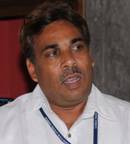 |
“Lack of suitable employment opportunities is one of the key challenges that the Post Graduate Diploma in Disaster Management at the M. S. University faces. This challenge may result into a long gestation period in shaping this and similar initiatives in India,” Dr. K. C. Tiwari, Professor of Geology, The M. S. University, Baroda |
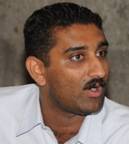 |
“Many of us who teach these courses at the university level are neither full/professionally trained in disaster management nor carry a qualified academic degrees in disaster management from a recognized university. Thus, there is a clear need that these courses are encouraged and supported so that we can have a brand new stream of experts professional in India,” Mr. Ninad Zala, Professor, Post Graduate Diploma in Disaster Management, Anand Institute of Social Work, Anand |
 |
“Academic institutions have a key role to play in developing new disaster management curricula for the next generation, as well as providing short courses for policy makers and a wide range of other professionals whose daily decisions influence the level of disaster risk we all live with. Artificial barriers between scientific disciplines need to be overcome and disaster management taught in a more holistic fashion, taking into consideration the contributions of both natural and social sciences,” Maya Schaerer, ProVention Consortium, Geneva |
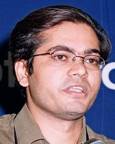 |
“Training and education is one of the most creative disciplines and you will find most creative people engaged in it. Exposure to rapidly changing body of knowledge on DRR and new teaching tools and techniques is so vital for continual quality improvements. Teaching similar DRR contents repeatedly often leads to fatigue and loss of interest. TLC is supposed to be a platform where trainers and academics can reenergize themselves,” Mehul Pandya, All India Disaster Mitigation Institute. |
|
|


